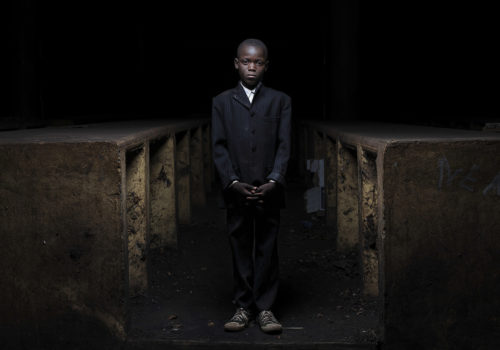More discreet this year, the Bamako Encounters Off was embodied through a few places and exhibitions, such as “Koungo Finiti” by Arnold Grojean.
West Africa has certain urban tragedies that should be looked at without pathos, but with a raw light, without blush or grandiloquence, without arrogance or ignorance. In other words, with a sharp eye.
“Koungo Fitini” means “minor problems” in Bambara. The Belgian photographer Arnold Grojean has documented for several years the daily life of “street children”, also called “trafficked children”, two litotes designating the phenomenon of children stolen from their families, or left to their own devices because they are orphans or penniless, and exploited most of the time by informal networks, if not by their own families.
These children are taken from their families and their daily lives in various parts of Mali, in outlying areas of the capital or in poor neighborhoods. Some beg at the Sudanese market or at traffic lights, others steal at the Halles of Bamako. Olivier Douville in the review Enfances & Psy (2003, n° 22) gives a rather faithful picture of their reality.
What psychological, sociological or journalistic investigation cannot always represent, photography can. As it is, Arnold Grojean’s reportage published in 2013 shows a dozen children aged 11 to 13. Most of them live on the street. The photographer wanted to represent their reality while giving them means of expression. His exhibition at the Museum of Bamako gives a great place to the languages of these children. These are their notebooks, their nightly portraits (after having taught them the rudiments of photography), their images and drawings.
“I hope to have been faithful to the children’s intentions,” he writes with measure. Cheick Diallo, general delegate for photography at the Rencontres de Bamako, emphasizes the author’s intention. “His theme and his subject have been controversial. Arnaud has convictions, holds to an ethic, and it was enough for a foreign photographer, a white one at that, to photograph misery for him to be condemned. But this is far from it. It is important to show the problems that this society creates.
Arnold Grojean’s report, conducted with several associations on the spot and over several years, tells the story of the violence in these children’s daily lives. It tells of the sexual exploitation of young girls by their own fathers, of the addictions that are quickly picked up, of the madness that gradually penetrates the soul, and even of the people who are burned alive by the mob. The catalog of all this violence subtly removes the reality of this daily life. The enumeration weakens, makes painless and impalpable like a statistic. The image sometimes comes to be added to this violence and makes it unreal. It takes the time of the exhibition to find the time of this reality, the testimonies of these children, their innocent drawings of this violence and the worthy portraits of Arnold Grojean to anchor their faces in the memory.
An exhibition supported by the European Union, along with the Samu Social and CISP.
More information
















